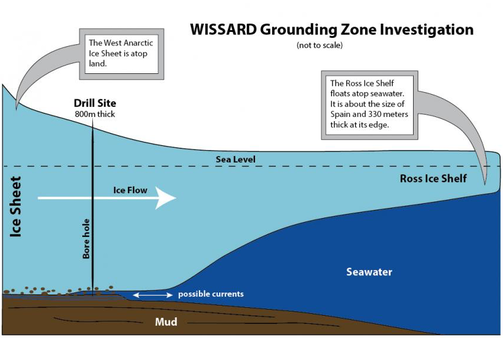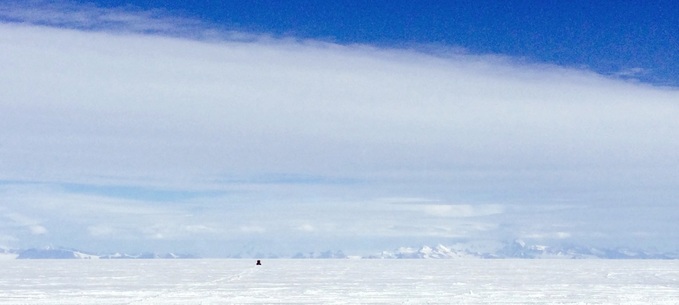Whillans Ice Stream Grounding Zone
 The Grounding Zone sampling site. From the WISSARD website.
The Grounding Zone sampling site. From the WISSARD website.
In 2015, WISSARD accessed the ocean beneath the Ross Ice Shelf at the Whillans Ice Stream Grounding Zone - the point where the Antarctic Ice Sheet leaves the land and begins to float on top of the ocean. More information about ice sheets and ice shelves is available here.
My research on the Grounding Zone uses measurements of organic matter quality (excitation emission matrix spectroscopy) and stable isotopes of carbon and nitrogen to determine whether the ecosystem beneath the Ross Ice Shelf depends on organic matter derived from the open ocean, some 600 km away, organic matter carried from subglacial systems beneath the adjacent Whillans Ice Stream, or in situ production of organic matter by chemoautotrophic microorganisms. Additionally, I will examine the importance of ammonium in this system by collaborating with Dr. Wayne Gardner at the University of Texas Marine Science Center to measure rates of ammonium uptake and turnover, and nitrification.
My research on the Grounding Zone uses measurements of organic matter quality (excitation emission matrix spectroscopy) and stable isotopes of carbon and nitrogen to determine whether the ecosystem beneath the Ross Ice Shelf depends on organic matter derived from the open ocean, some 600 km away, organic matter carried from subglacial systems beneath the adjacent Whillans Ice Stream, or in situ production of organic matter by chemoautotrophic microorganisms. Additionally, I will examine the importance of ammonium in this system by collaborating with Dr. Wayne Gardner at the University of Texas Marine Science Center to measure rates of ammonium uptake and turnover, and nitrification.

